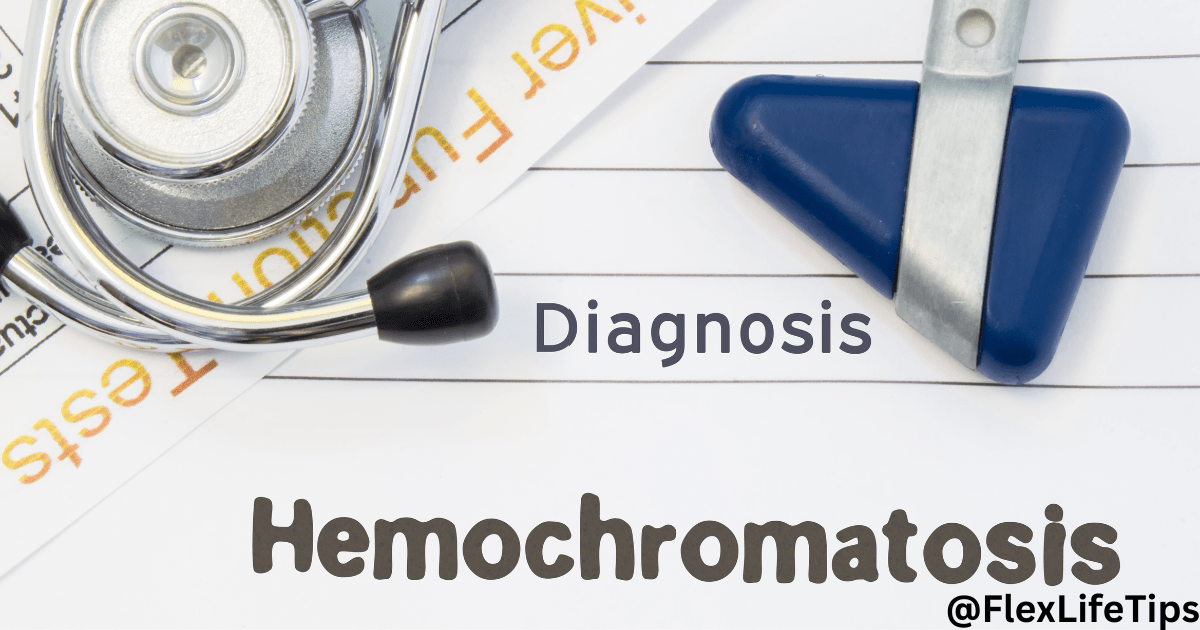Introduction of Food With Iron in Them
Welcome to the world of nutrition where the focus is on “food with iron in them.” In this concise guide, we unravel the importance of iron in your diet and explore the diverse range of foods that can effortlessly boost your iron intake. Whether you’re a fan of shellfish, spinach, or lean meats, understanding how to incorporate these iron-rich options into your meals is key. Let’s dive into the essentials of iron, why your body craves it, and how these simple dietary adjustments can pave the way for a healthier you. Ready to discover the delicious and nutritious universe of foods abundant in iron? Let’s get started.
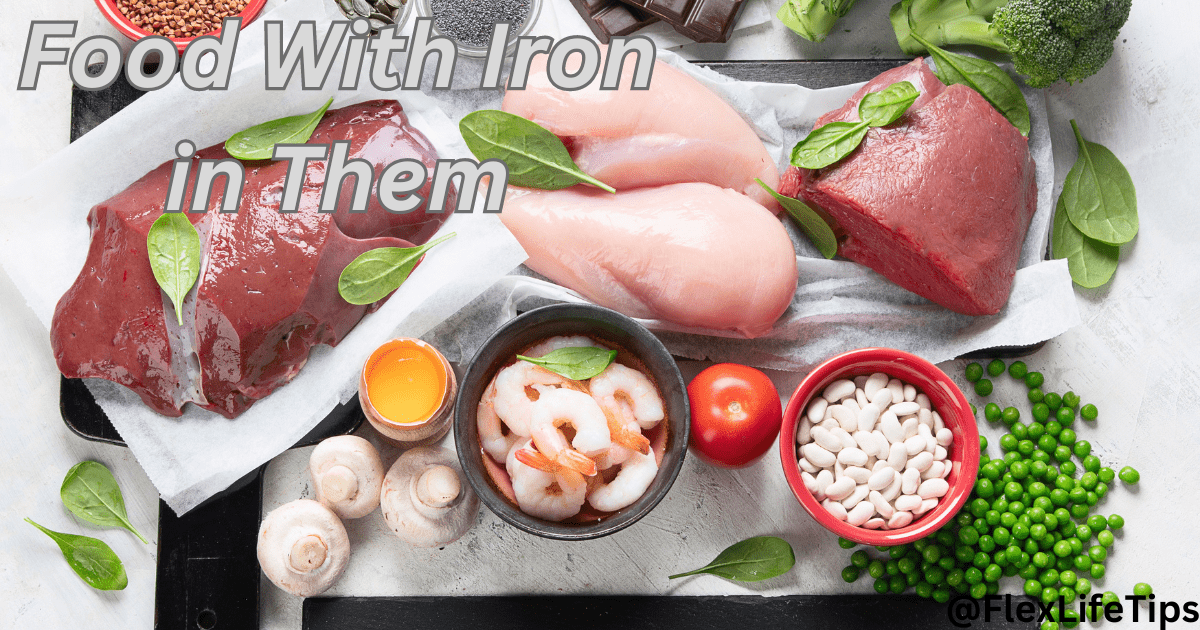
Understanding Iron
Iron, an elemental cornerstone for robust health, plays a vital role in various physiological functions. To comprehend the significance of “food with iron in them,” it’s essential to understand the two primary forms of iron found in our diet: heme iron and non-heme iron.
Heme iron is derived from animal sources, such as meat, poultry, and fish. This type of iron is typically more efficiently absorbed by the body, making it a valuable component for those seeking to boost their iron levels.
Non-heme iron, on the other hand, is primarily present in plant-based sources like beans, lentils, and fortified cereals. While the absorption of non-heme iron is generally lower than that of heme iron, combining these foods with vitamin C-rich options can enhance absorption significantly.
Iron, in both forms, contributes to the production of hemoglobin – a protein in red blood cells that carries oxygen from the lungs to the rest of the body. This oxygen transport system is crucial for energy production and overall vitality.
Ensuring a balance between heme and non-heme iron sources in your diet is key to meeting your nutritional needs. In the upcoming sections, we’ll delve into specific “food with iron in them” – both heme and non-heme – to help you curate a diverse and iron-rich menu that aligns with your dietary preferences. Stay tuned for a closer look at the delicious options that can elevate your iron intake and contribute to your overall well-being.
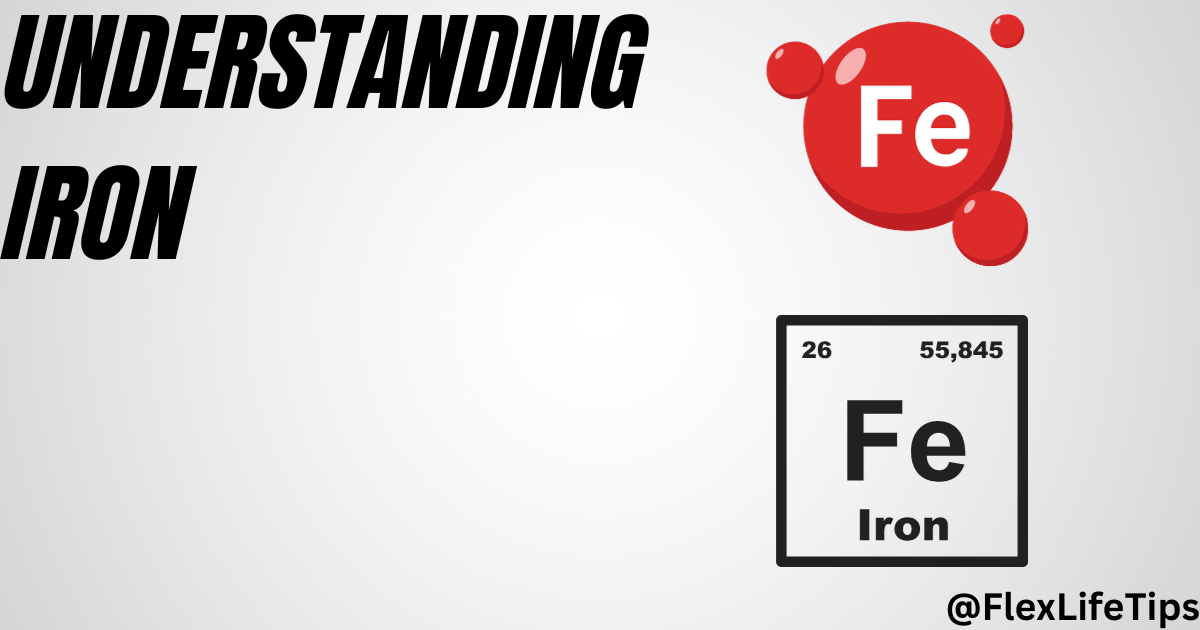
Why do I need iron?
“Why do I need iron?” is a pivotal question that underscores the fundamental importance of this essential mineral in maintaining optimal health. Iron plays a central role in various physiological processes, and its absence can lead to significant consequences.
One of the primary functions of iron is its involvement in the production of hemoglobin, the protein responsible for transporting oxygen in red blood cells. Without sufficient iron, the body struggles to produce an adequate amount of hemoglobin, leading to a condition known as iron deficiency anemia.
Iron deficiency anemia manifests in symptoms such as fatigue, weakness, and pallor. In essence, the body lacks the necessary tools to transport oxygen efficiently, resulting in a notable decrease in energy levels. This condition underscores the critical role of “food with iron in them” in sustaining the body’s energy and vitality.
Beyond its role in hemoglobin production, iron is also crucial for overall cellular function. It contributes to enzymatic reactions and supports the immune system, reinforcing the necessity of maintaining adequate iron levels for overall well-being.
In summary, understanding why your body needs iron emphasizes the importance of incorporating “food with iron in them” into your daily diet. From sustaining energy levels to supporting immune function, iron is undeniably a cornerstone of good health. As we progress, we’ll explore specific foods rich in iron, ensuring you have the knowledge to make informed and health-conscious choices for your diet.
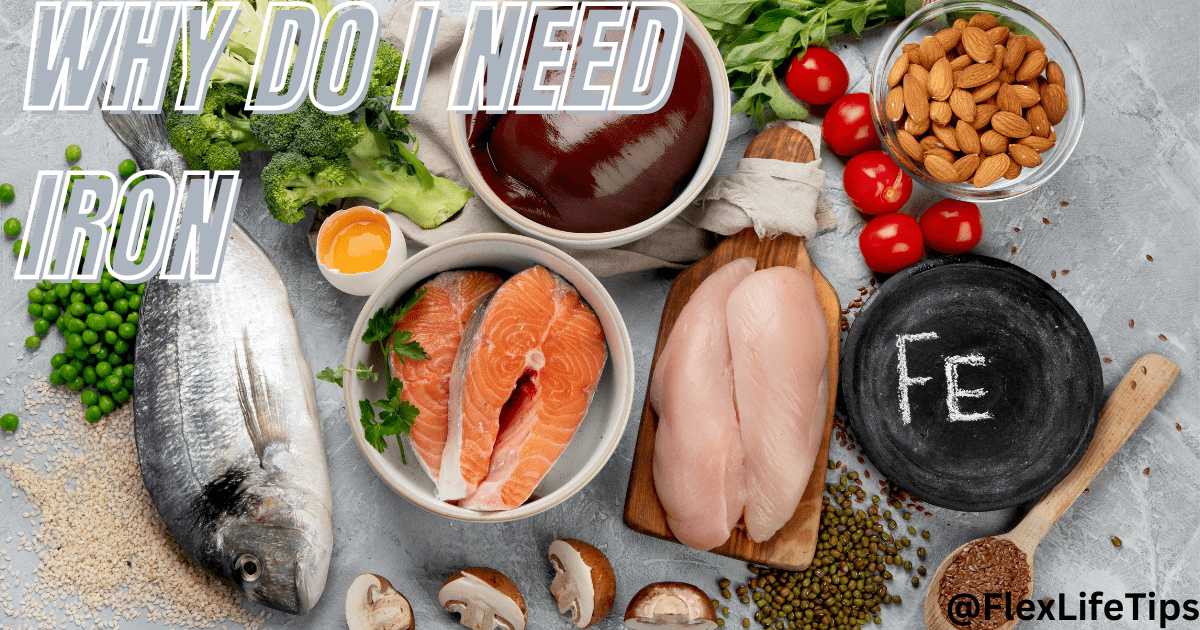
Iron Requirements
Understanding the body’s iron requirements is a crucial step in maintaining optimal health. The amount of iron an individual needs can vary based on factors such as age, gender, and overall health. Let’s break down the basics to ensure you’re meeting your unique iron needs.
The recommended daily intake of iron is measured in milligrams (mg). For adult males, the recommended amount is around 8 mg per day, while adult females may require more, especially during their reproductive years, with a recommended daily intake of about 18 mg. During pregnancy, iron needs to increase to support the growing fetus, with a recommended intake of 27 mg per day.
Children also have specific iron requirements, with infants needing around 0.27 mg per day and toddlers requiring approximately 7 mg. These numbers underscore the importance of tailoring iron intake to individual needs, taking into account factors such as growth, development, and overall health.
It’s worth noting that while iron is essential, more is not always better. Excessive iron intake can lead to adverse effects. Striking the right balance is key to reaping the benefits of “food with iron in them” without encountering potential drawbacks.
As we explore specific foods rich in iron in the following sections, keep these recommended intake levels in mind. Understanding your iron requirements will empower you to make informed choices and ensure that your diet aligns with your unique nutritional needs. Stay tuned for a closer look at the diverse and delicious options that can help you achieve your daily iron goals.
Sources of Iron
Diving into the heart of our exploration, let’s unravel the diverse sources of iron, emphasizing the significance of including “food with iron in them” in your daily diet. Iron-rich foods come in two primary forms: heme iron and non-heme iron.

Heme Iron Sources:
- Red Meat: Beef, lamb, and pork stand out as potent sources of heme iron. These meats not only provide a substantial iron boost but also offer essential proteins.
- Poultry: Chicken and turkey are excellent sources of heme iron. Including lean cuts in your meals ensures a nutritious iron intake.
- Fish: Seafood, especially varieties like tuna and salmon, not only adds diversity to your diet but also contributes heme iron.
Non-Heme Iron Sources:
- Legumes: Beans, lentils, and chickpeas are rich in non-heme iron. These plant-based options are versatile and can be easily incorporated into various dishes.
- Spinach: This leafy green is a nutritional powerhouse, providing a substantial amount of non-heme iron. Fresh or cooked, spinach offers a nutrient-dense addition to your plate.
- Fortified Cereals: Many cereals are fortified with iron, offering a convenient and accessible way to increase your iron intake, particularly for breakfast.
- Tofu: A staple in vegetarian and vegan diets, tofu is not only a great protein source but also contains non-heme iron.
- Nuts and Seeds: Almonds, pumpkin seeds, and sunflower seeds are not only delicious snacks but also pack a punch in terms of non-heme iron.
While heme iron is generally more readily absorbed by the body, incorporating a variety of both heme and non-heme iron sources ensures a balanced and comprehensive iron intake. Remember, it’s not just about the quantity but the diversity of “food with iron in them” that contributes to your overall well-being. In the upcoming sections, we’ll delve into specific iron-rich foods, providing you with insights to craft a delicious and nutritious menu that suits your dietary preferences.
Iron-Rich Foods
Embark on a flavorful journey as we explore specific “food with iron in them,” ensuring your meals are not only nutritious but also delicious. Including a variety of iron-rich options in your diet is the key to meeting your daily requirements. Let’s delve into some delectable choices:
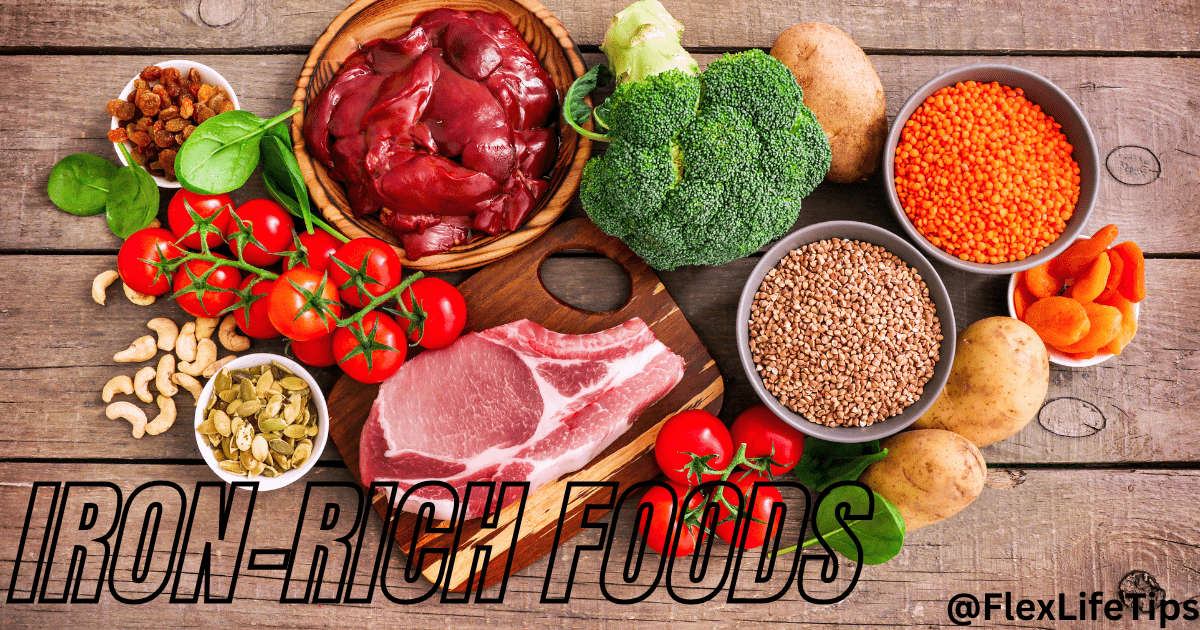
- Shellfish:
- Indulge in the richness of shellfish like clams, mussels, and oysters. Not only are they sumptuous additions to your meals, but they’re also high in heme iron, making them readily absorbable by the body.
- Spinach:
- This leafy green powerhouse is a versatile addition to salads, smoothies, or sautés. Packed with non-heme iron, spinach offers a nutritional boost to your meals.
- Liver and Other Organ Meats:
- For those who enjoy organ meats, the liver is an exceptional source of heme iron. While it’s essential to consume these in moderation, they can play a valuable role in meeting your iron needs.
- Legumes:
- Beans, lentils, and chickpeas bring both protein and non-heme iron to your plate. These pantry staples are excellent for crafting hearty and nutritious dishes.
- Red Meat:
- Beef, lamb, and pork are classic choices for those seeking heme iron. Grilling, roasting, or stir-frying these meats can elevate your iron intake while satisfying your taste buds.
- Pumpkin Seeds:
- A crunchy and nutritious snack, pumpkin seeds are rich in non-heme iron. Sprinkle them on salads, or yogurts, or enjoy them on their own for a delightful boost.
- Quinoa:
- A versatile grain that serves as a complete protein, quinoa is also a non-heme iron source. Use it as a base for salads, and bowls, or as a side dish to complement your main course.
- Turkey:
- Lean turkey meat provides heme iron along with a lean protein source. Whether roasted, grilled, or incorporated into various dishes, turkey is a wholesome choice.
- Broccoli:
- This cruciferous vegetable not only adds a vibrant touch to your plate but also contributes non-heme iron. Steamed, roasted, or sautéed, broccoli is a versatile and nutritious side.
- Tofu:
- A staple in vegetarian and vegan diets, tofu is a plant-based protein that offers non-heme iron. Experiment with different cooking methods to incorporate tofu into your meals.
- Dark Chocolate:
- Indulge your sweet tooth with dark chocolate, which satisfies cravings and provides a modest amount of non-heme iron. Opt for varieties with higher cocoa content for maximum benefits.
- Fish:
- Varieties like salmon and tuna not only offer a delightful dining experience but also contribute heme iron to your diet. Include them in your seafood rotation for a flavorful boost.
By incorporating these iron-rich foods into your meals, you ensure a diverse and satisfying approach to meeting your nutritional needs. The key lies in creating a well-rounded and enjoyable diet that aligns with your preferences and lifestyle. Stay tuned as we continue to unravel insights into optimizing your iron absorption and crafting a nutritionally balanced lifestyle.
Optimizing Iron Absorption
Discovering the right “food with iron in them” is only half the equation; understanding how to optimize iron absorption ensures you unlock the full nutritional benefits. While some iron-rich foods readily offer this essential mineral, incorporating certain strategies can enhance its absorption, contributing to overall well-being.
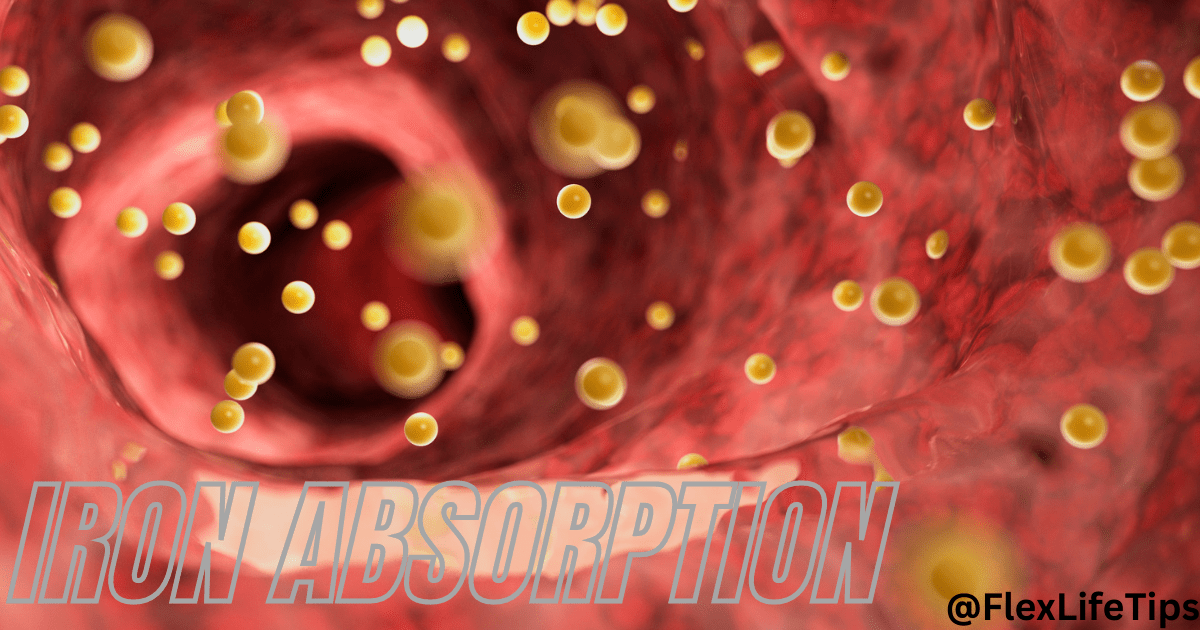
- Pairing Iron with Vitamin C:
- Combining foods high in iron with those rich in vitamin C can significantly boost absorption. For instance, squeeze lemon juice over spinach or enjoy a citrus-infused salad alongside your iron-rich meal.
- Cooking in Cast Iron Cookware:
- Cooking food in cast iron pans adds a small amount of iron to the food. While this isn’t the primary source of iron, it contributes to overall intake, especially when cooking acidic or high-moisture foods.
- Avoiding Calcium-Rich Foods During Iron-Rich Meals:
- Calcium can inhibit the absorption of non-heme iron. To optimize absorption, avoid consuming dairy products or calcium supplements during meals rich in iron.
- Including Meat, Fish, or Poultry in Non-Heme Iron Meals:
- While non-heme iron is found in plant-based sources, pairing these meals with a small amount of meat, fish, or poultry containing heme iron can enhance overall iron absorption.
- Diversifying Iron Sources:
- Incorporating a mix of heme and non-heme iron sources ensures a steady iron supply. This variety not only caters to different dietary preferences but also supports balanced absorption.
- Avoiding Coffee and Tea with Iron-Rich Meals:
- Compounds in coffee and tea can inhibit non-heme iron absorption. Consider enjoying these beverages between meals rather than during or immediately after iron-rich eating.
- Soaking and Fermenting:
- For plant-based iron sources like legumes, soaking and fermenting can reduce compounds that inhibit iron absorption. Include fermented foods like tempeh for a double nutritional benefit.
- Moderate Alcohol Consumption:
- Excessive alcohol can interfere with iron absorption and utilization. Moderation is key to maintaining optimal iron levels.
By incorporating these simple practices into your routine, you can ensure that the “food with iron in them” not only delights your taste buds but also maximizes the nutritional benefits for your body. The art lies in creating a synergy between iron-rich choices and absorption-enhancing habits, fostering a holistic approach to your dietary well-being. As we continue our exploration, we’ll delve into the broader nutritional impact of iron-rich foods, offering insights into crafting a balanced and health-conscious lifestyle.
Nutritional Impact
Beyond the immediate benefits of meeting your daily iron requirements, the “food with iron in them” contributes to a broader spectrum of nutritional impact. Let’s delve into how incorporating these iron-rich options into your diet influences your overall well-being.
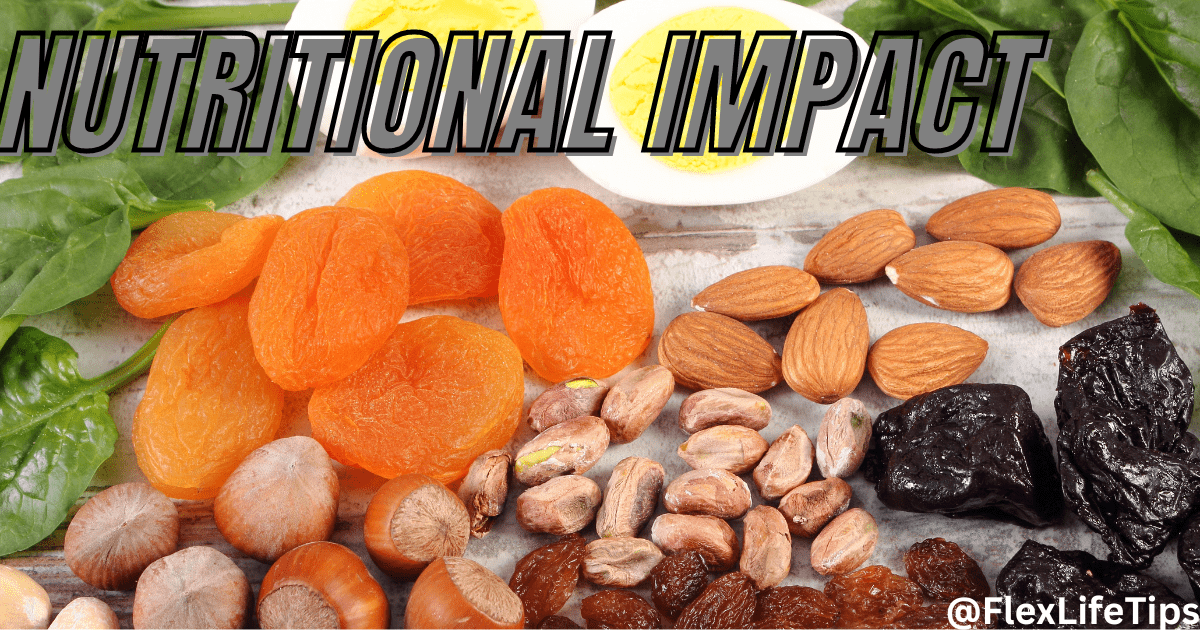
- Energy Boost:
- Iron plays a pivotal role in the production of hemoglobin, the oxygen-carrying protein in red blood cells. By ensuring an adequate intake of iron-rich foods, you support the efficient transport of oxygen, leading to increased energy levels and vitality.
- Improved Immune Function:
- Iron is a vital component of various enzymes and proteins involved in immune function. Including a variety of iron-rich foods enhances your body’s ability to fend off infections and illnesses, contributing to overall immune resilience.
- Enhanced Cognitive Function:
- Iron is essential for proper cognitive function, including memory and concentration. A diet rich in iron ensures that your brain receives the oxygen it needs, promoting optimal cognitive performance.
- Support for Physical Growth and Development:
- Adequate iron intake is particularly crucial during periods of rapid growth, such as childhood, adolescence, and pregnancy. “Food with iron in them” supports the development of healthy red blood cells and tissues, contributing to overall physical growth.
- Prevention of Iron Deficiency Anemia:
- Consistent consumption of iron-rich foods helps prevent iron deficiency anemia, a condition that can lead to fatigue, weakness, and other health complications. Prioritizing these foods is a proactive step toward maintaining good health.
- Balanced Nutrition:
- Iron-rich foods often come packaged with a host of other essential nutrients. Whether it’s the protein in meats, the fiber in legumes, or the vitamins in vegetables, these foods contribute to a balanced and diverse nutritional profile.
- Heart Health:
- Iron is involved in the transport of oxygen to the heart. Ensuring a sufficient intake of iron supports cardiovascular health, contributing to the overall well-being of this vital organ.
- Prevention of Iron Overload:
- While iron is essential, too much of it can lead to adverse effects. By obtaining iron through a diverse range of foods, you reduce the risk of excessive iron intake and its associated complications.
Incorporating “food with iron in them” into your diet goes beyond meeting a single nutrient requirement. It’s a holistic approach to nourishing your body, supporting various physiological functions, and laying the foundation for long-term health. As we proceed, we’ll explore the potential consequences of insufficient iron intake and strategies for maintaining an iron-conscious lifestyle. Stay tuned for insights into the importance of balance in your dietary choices.
Iron Deficiency and Health Implications
Understanding the potential consequences of insufficient intake of “food with iron in them” is crucial for maintaining optimal health. Iron deficiency can lead to a range of health issues, and recognizing the signs early on empowers you to take proactive steps toward better well-being.
- Iron Deficiency Anemia:
- A primary consequence of inadequate iron intake is iron deficiency anemia. This condition occurs when the body lacks sufficient iron to produce an adequate amount of hemoglobin, resulting in decreased oxygen transport and, subsequently, symptoms like fatigue, weakness, and pallor.
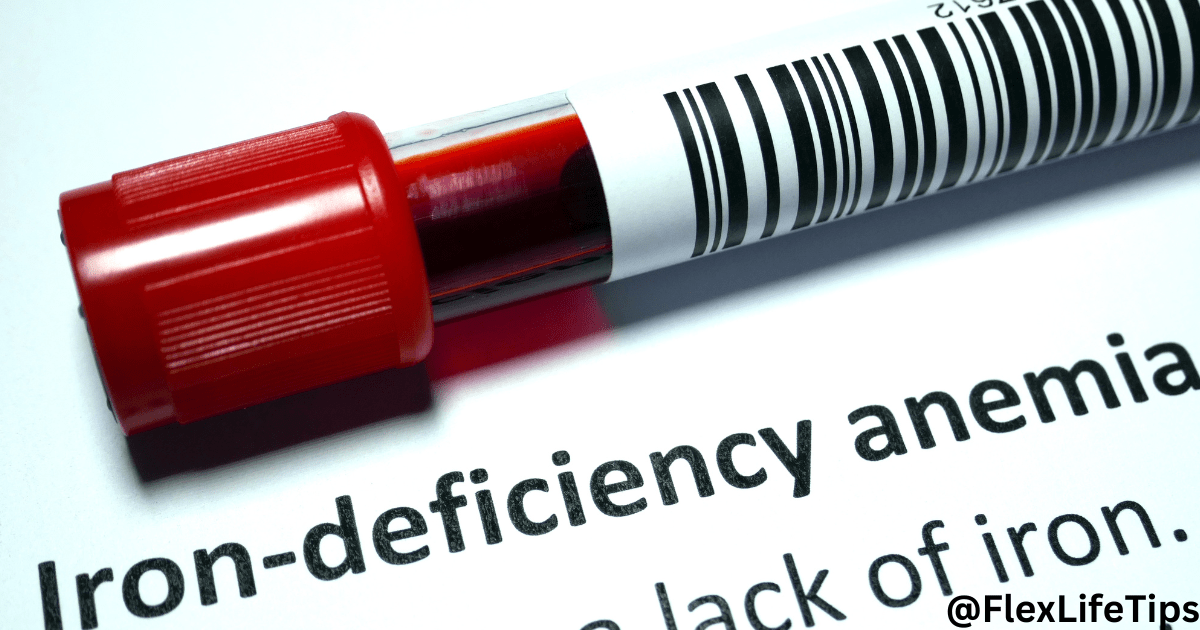
- Impaired Cognitive Function:
- Insufficient iron levels can impact cognitive function, leading to difficulties with memory, concentration, and overall mental alertness. This emphasizes the importance of incorporating a variety of “food with iron in them” to support optimal brain health.
- Weakened Immune System:
- Iron deficiency compromises the function of immune cells, reducing the body’s ability to defend against infections and illnesses. Frequent infections and a weakened immune response may signal a deficiency in iron.
- Fatigue and Weakness:
- Iron plays a pivotal role in energy production. Without enough iron, the body struggles to generate energy, leading to persistent fatigue and weakness. Addressing iron deficiency is a key strategy for combating low energy levels.
- Pale Skin and Nail Changes:
- Iron deficiency can manifest externally through changes in skin tone and nail health. Pale skin and brittle, spoon-shaped nails may indicate insufficient iron levels and warrant attention to dietary choices.
- Shortness of Breath:
- In severe cases of iron deficiency, the decreased oxygen-carrying capacity of the blood may lead to shortness of breath, even with minimal physical exertion. If you notice unexplained changes in your breathing, consider assessing your iron intake.
- Headaches and Dizziness:
- Insufficient iron levels can contribute to headaches and dizziness due to reduced oxygen supply to the brain. If these symptoms persist, it’s essential to evaluate your diet and consider including more “food with iron in them.“
Recognizing the signs of iron deficiency allows for timely intervention through dietary adjustments and, if necessary, supplementation. Incorporating a diverse range of iron-rich foods ensures that you not only enjoy a variety of flavors but also safeguard your body against the potential health implications of insufficient iron intake. In the upcoming sections, we’ll explore considerations for maintaining a healthy balance, ensuring that your iron consumption aligns with your unique nutritional needs. Stay tuned for insights into achieving an iron-conscious lifestyle.
Excess Iron and Considerations
While ensuring an adequate intake of “food with iron in them” is essential for overall health, it’s equally important to be mindful of the potential risks associated with excessive iron consumption. Striking a balance ensures that you enjoy the benefits of iron without encountering adverse effects.
- Hemochromatosis:
- Hemochromatosis is a genetic disorder that leads to excessive iron absorption and storage in the body. While dietary iron plays a role, individuals with this condition may need to closely monitor their intake of iron-rich foods to avoid complications.

- Iron Overload:
- In some cases, excessive iron intake, whether through supplements or dietary sources, can lead to iron overload. This condition may contribute to organ damage, particularly in the liver, heart, and pancreas. Monitoring iron levels through regular health check-ups is crucial, especially for those at risk.
- GI Discomfort:
- High levels of iron intake, particularly from supplements, can cause gastrointestinal discomfort. Symptoms may include nausea, vomiting, and abdominal pain. Adjusting the source and form of iron can help mitigate these effects.
- Increased Oxidative Stress:
- Excess iron in the body can contribute to oxidative stress, leading to cell damage. This underscores the importance of obtaining iron from a balanced and varied diet rather than relying solely on supplements.
- Interference with Other Minerals:
- Excessive iron intake may interfere with the absorption of other minerals, such as zinc and copper. Maintaining a diverse diet ensures that your body receives a spectrum of nutrients without compromising their absorption.
- Individual Variability:
- The body’s ability to handle iron varies from person to person. Factors such as age, gender, and overall health play a role in determining individual iron needs. It’s advisable to consult with a healthcare professional to assess your specific requirements.
- Regular Monitoring:
- Regular health check-ups that include iron level assessments provide valuable insights into your nutritional status. This proactive approach allows for adjustments to your diet or supplementation regimen based on your evolving health needs.
Maintaining a healthy balance when it comes to iron intake involves being aware of both deficiency and excess. While enjoying a variety of “food with iron in them” contributes to your overall well-being, individual considerations and potential risks underscore the importance of personalized health management. As we conclude our exploration, we’ll provide additional resources and support to guide you in making informed decisions about your iron consumption. Stay tuned for insights into optimizing your iron-conscious lifestyle.
Additional Resources and Support
Empowering yourself with knowledge and seeking support are integral aspects of maintaining a balanced and iron-conscious lifestyle. In this section, we’ll explore resources and avenues that can guide you in making informed decisions about incorporating “food with iron in them” into your diet.
- Healthcare Professionals:
- Consultation with healthcare professionals, such as registered dietitians and nutritionists, is a valuable first step. They can provide personalized guidance based on your health status, dietary preferences, and lifestyle.
- Nutritional Apps and Websites:
- Numerous apps and websites are dedicated to tracking nutritional content, including iron levels, in various foods. These tools can help you plan meals that align with your iron requirements and provide a convenient way to monitor your dietary choices.
- Educational Materials from Health Organizations:
- Reputable health organizations offer educational materials on iron-rich foods and their impact on health. Websites of organizations like the World Health Organization (WHO) or national health departments often provide reliable and accessible information.
- Cookbooks and Recipe Guides:
- Explore cookbooks and recipe guides that focus on creating delicious meals incorporating “food with iron in them.” These resources can inspire culinary creativity while ensuring a nutritious and iron-rich diet.
- Online Communities and Forums:
- Joining online communities and forums dedicated to nutrition and wellness allows you to connect with individuals who share similar health goals. Sharing experiences, recipes, and tips can provide additional insights into incorporating iron-rich foods into your daily life.
- Supplemental Guidance:
- In certain situations, healthcare professionals may recommend iron supplements to address deficiencies. However, it’s crucial to use supplements under professional guidance to prevent excess iron intake and associated risks.
- Regular Health Check-ups:
- Schedule regular health check-ups to monitor your overall health, including iron levels. These check-ups provide an opportunity for healthcare professionals to assess your nutritional status and offer guidance based on any changes in your health.
- Educational Workshops and Seminars:
- Attend workshops or seminars organized by healthcare institutions, community centers, or nutrition experts. These events often cover a range of topics related to nutrition, including the importance of “food with iron in them” and strategies for maintaining a well-balanced diet.
Remember, incorporating iron-rich foods into your diet is a journey, and having access to reliable resources and support can enhance your experience. Whether you’re navigating dietary preferences, addressing specific health concerns, or simply aiming for a more conscious approach to nutrition, the information and assistance available can guide you toward a healthier and more iron-aware lifestyle. As we conclude our exploration, take these insights forward as tools to shape your ongoing journey toward optimal well-being.
FAQs
Here are frequently asked questions (FAQs) about “food with iron in them“:
- Q: Why is it important to include food with iron in them in my diet?
- A: Including food with iron in them is essential because iron is a crucial mineral that supports the production of hemoglobin, responsible for transporting oxygen in the blood. This ensures optimal energy levels and overall well-being.
- Q: What are some common sources of food with iron in them?
- A: Common sources of food with iron in them include red meat, poultry, fish, legumes, spinach, fortified cereals, tofu, and various nuts and seeds.
- Q: Can a vegetarian or vegan diet provide enough food with iron in them?
- A: Yes, a vegetarian or vegan diet can provide sufficient iron by incorporating plant-based sources such as beans, lentils, tofu, fortified cereals, and green leafy vegetables.
- Q: How much food with iron in them do I need daily?
- A: Daily iron requirements vary based on factors like age, gender, and overall health. Generally, adult males need around 8 mg per day, while adult females may require up to 18 mg, especially during reproductive years.
- Q: What happens if I don’t consume enough food with iron in them?
- A: Insufficient intake of food with iron in them can lead to iron deficiency, resulting in symptoms like fatigue, weakness, and, in severe cases, iron deficiency anemia.
- Q: Can I get too much iron from food with iron in them?
- A: While it’s essential to meet your iron needs, excessive intake can lead to iron overload, causing adverse health effects. It’s crucial to strike a balance and avoid unnecessary iron supplementation.
- Q: How can I enhance the absorption of iron from food with iron in them?
- A: Enhance iron absorption by pairing iron-rich foods with those high in vitamin C, cooking in cast iron cookware, and avoiding calcium-rich foods during iron-rich meals.
- Q: Are there specific iron-rich foods suitable for children?
- A: Yes, iron-rich foods suitable for children include fortified cereals, lean meats, poultry, fish, beans, and lentils. It’s crucial to ensure a balanced and varied diet for growing children.
- Q: Can I meet my iron needs through supplements alone, or is food with iron in them better?
- A: While supplements can be necessary in specific cases, obtaining iron through a varied diet of food with iron in them is generally preferable. Whole foods provide a spectrum of nutrients, promoting overall health.
- Q: Are there any side effects of consuming too much food with iron in them?
- A: Excessive intake of food with iron in them, particularly from supplements, can lead to gastrointestinal discomfort, interfere with other mineral absorption, and, in severe cases, contribute to organ damage. It’s essential to consume iron in moderation.
Remember to consult with healthcare professionals for personalized advice regarding your iron intake and dietary choices.
Conclusion
In conclusion, the significance of incorporating a variety of “food with iron in them” into your daily diet cannot be overstated. These iron-rich sources play a pivotal role in supporting essential bodily functions, ranging from oxygen transport to energy production and immune system health.
By understanding the diverse forms of iron, including heme and non-heme sources, individuals can tailor their dietary choices to meet their unique nutritional needs. From the vibrant array of fruits and vegetables to the hearty selection of meats and legumes, the world of food offers a plethora of options to ensure a well-balanced iron intake.
Optimizing iron absorption through thoughtful pairings with vitamin C-rich foods, mindful cooking practices, and avoiding inhibitors like excessive coffee or tea consumption adds a layer of strategy to the pursuit of a health-conscious lifestyle.
